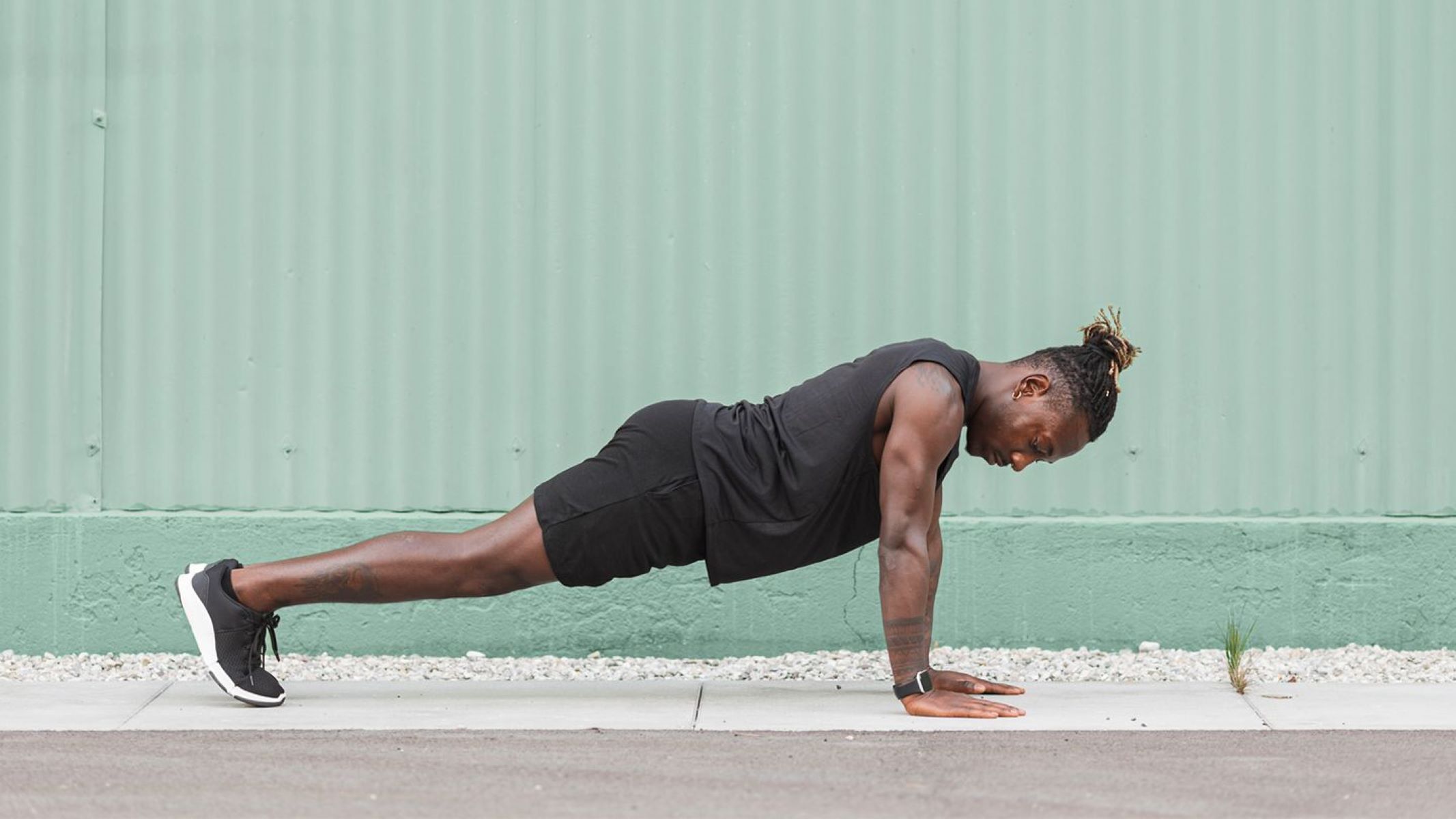

Featured
How To Build Endurance For Cycling
Modified: October 24, 2023
Learn how to build endurance cycling and take your cycling skills to the next level with our featured guide.
Introduction
Endurance cycling is a challenging yet rewarding activity that can provide numerous physical and mental benefits. Whether you’re a seasoned cyclist looking to push your limits or a beginner seeking to improve your fitness, endurance cycling can be a fantastic way to achieve your goals.
Endurance cycling involves sustained effort over long distances, typically lasting several hours or even days. This form of cycling requires stamina, mental toughness, and proper training to build the necessary endurance. It can take you on incredible journeys, exploring scenic routes and embracing the joy of the open road.
Beyond the thrill of exploration and adventure, endurance cycling offers a range of benefits for your physical health. It’s an excellent cardiovascular exercise that strengthens your heart, improves lung capacity, and enhances overall cardiovascular fitness. It also helps with weight management, as it burns a significant number of calories during extended rides.
Mentally, endurance cycling can be a powerful tool for stress relief and mental well-being. The long hours spent on the bike give you time to clear your mind, focus on the present moment, and find solace in the rhythm of pedaling. It can boost your mood, reduce anxiety, and enhance mental resilience.
Before embarking on your endurance cycling journey, it’s important to set clear goals. Do you want to complete a specific distance, participate in a race, or simply improve your overall fitness? Defining your objectives will help you create a training plan tailored to your needs and keep you motivated throughout the process.
Throughout this article, we will explore the key aspects of building endurance for cycling and provide you with practical tips to help you achieve success in your cycling endeavors. By following these guidelines, you will be well on your way to becoming a stronger, fitter, and more resilient cyclist.
Benefits of Endurance Cycling
Endurance cycling offers a plethora of benefits for both your physical and mental well-being. Let’s dive into some of the key advantages of incorporating endurance cycling into your fitness routine:
- Improved Cardiovascular Health: Endurance cycling is a fantastic cardiovascular exercise that strengthens your heart, lowers resting heart rate, and improves blood circulation. Regular cycling can reduce the risk of heart disease and help maintain a healthy cardiovascular system.
- Enhanced Endurance and Stamina: As the name suggests, endurance cycling focuses on developing your stamina. By gradually increasing your mileage and spending more time on the bike, you’ll build endurance and be able to sustain higher-intensity efforts for longer periods.
- Weight Management: Endurance cycling is an effective way to burn calories and shed unwanted pounds. The longer duration of the rides, coupled with the sustained effort, helps increase your metabolic rate and promotes weight loss. It can be an enjoyable alternative to traditional workouts.
- Muscle Strength and Tone: Cycling engages multiple muscle groups, including the quadriceps, hamstrings, calves, and glutes. Regular endurance rides can help build leg strength, improve muscle tone, and develop a strong core. It’s a low-impact exercise that puts less stress on your joints compared to activities like running.
- Mental Well-being: Endurance cycling has numerous mental benefits. Spending time outdoors, connecting with nature, and enjoying the scenery can be mentally uplifting. Cycling also releases endorphins, which can boost your mood, reduce stress, and enhance mental clarity. It’s an excellent way to rejuvenate your mind and find a sense of calm and tranquility.
- Improved Sleep Patterns: Engaging in regular endurance cycling can positively impact your sleep quality. The physical exertion and fresh air can help regulate your sleep-wake cycle, making it easier to fall asleep and enjoy a restful night’s sleep.
By incorporating endurance cycling into your lifestyle, you can reap these incredible benefits and experience an overall improvement in your physical fitness and mental well-being. Now that we understand the advantages, let’s explore how to set achievable goals for endurance cycling in the next section.
Setting Your Cycling Goals
Before embarking on your endurance cycling journey, it’s essential to set clear and achievable goals. Setting goals will give you direction, motivation, and a sense of purpose throughout your training. Here are some key steps to consider when setting your cycling goals:
- Reflect on Your Motivation: Start by understanding why you want to pursue endurance cycling. Is it to complete a specific distance, participate in a race, or improve your overall fitness? Identifying your motivations will help you set meaningful goals that align with your desires.
- Be Realistic: Setting realistic and attainable goals is crucial. Consider your current fitness level, time availability, and other commitments. Gradually build upon your current abilities to avoid setting yourself up for disappointment or injury.
- Set Specific Goals: Make your goals specific and measurable. For example, instead of saying “I want to improve my endurance,” set a target like “I want to complete a 100-kilometer ride within three months.” Specific goals provide clarity and allow you to track your progress effectively.
- Break it Down: Break your long-term goal into smaller, manageable milestones. This will help you stay motivated by providing a series of achievable targets along the way. As you achieve each milestone, you’ll build confidence and momentum to keep pushing forward.
- Create a Timeline: Establish a timeline for reaching your goals. Determine a realistic time frame for each milestone and the final objective. Having a timeline will give you a sense of urgency and allow you to plan your training accordingly.
- Consider Personal Constraints: Take into account any personal constraints, such as work schedule, family commitments, and other activities. Ensure that your goals are feasible within your available time and resources. Adapt your training plan to accommodate your lifestyle responsibilities.
- Acknowledge and Celebrate Achievements: Celebrate your progress along the way. Each milestone achieved is a step closer to your ultimate goal. Recognize your hard work, reward yourself for accomplishments, and use these moments of celebration as motivation to keep pushing forward.
Setting clear and achievable goals is essential for maintaining focus, motivation, and progress in your endurance cycling journey. Once you have established your goals, the next step is to plan your training schedule effectively. We will explore strategies for planning your training schedule in the following section.
Planning Your Training Schedule
When it comes to endurance cycling, having a well-planned training schedule is vital for progressing towards your goals effectively and avoiding burnout or injury. Here are some key steps to consider when planning your training schedule:
- Assess Your Current Fitness Level: Start by evaluating your current fitness level. Consider factors such as your cycling experience, average speed, and endurance. This assessment will help you gauge your starting point and plan your training accordingly.
- Set Weekly Training Hours: Determine how many hours you can realistically dedicate to training each week. Consider your work and personal commitments to strike a balance that allows for consistency but also allows for rest and recovery. Aim for a gradual increase in training volume over time.
- Include Variety in Your Training: A well-rounded training schedule should include a mix of different types of rides. Incorporate long endurance rides to build stamina, interval training for speed and power, recovery rides to allow your body to regenerate, and strength or cross-training sessions to supplement your cycling efforts.
- Allocate Rest Days: Rest days are as important as training days. They allow your body to recover, repair and adapt to the training stress. Plan dedicated rest days throughout the week to prevent overtraining and reduce the risk of injuries. Listen to your body and adjust your training schedule if you feel overly fatigued or experiencing any signs of overtraining.
- Gradually Increase Intensity and Duration: Gradually increase the intensity and duration of your rides as your fitness improves. Progressive overload is key to building endurance and resilience. However, avoid making sudden and drastic changes to prevent injury. Slowly increase your mileage and intensity over time to allow your body to adapt.
- Consider Periodization: Incorporate periodization into your training schedule. Periodization involves dividing your training into different phases, each with a specific focus and intensity. It allows for adequate recovery and prevents stagnation. For instance, you can have a base-building phase, followed by a phase focused on speed and power, and then a tapering phase leading up to your target event.
- Listen to Your Body: Pay attention to your body’s signals. If you experience persistent fatigue, pain, or other signs of overtraining, adjust your training schedule accordingly. Rest and recovery are just as important as training itself. Prioritize self-care and make adjustments to prevent burnout and injuries.
Remember, every cyclist is unique, and what works for one person may not work for another. Keep track of your progress, be flexible with your training schedule, and make adjustments as needed. Now that we have established the importance of planning your training schedule, let’s explore how to build a solid base for endurance cycling in the next section.
Building a Solid Base
Building a solid base is an essential foundation for endurance cycling. A strong base provides the necessary fitness, strength, and endurance to tackle longer rides and more intense training in the future. Here are some key principles to consider when building a solid base:
- Consistency is Key: Consistency is vital when it comes to building a base. Aim to ride regularly, gradually increasing your training volume and intensity over time. Consistent training allows your body to adapt and develop the necessary cardiovascular fitness and muscular endurance.
- Long Endurance Rides: Focus on longer endurance rides to build stamina. Start with a comfortable distance and gradually increase the duration of your rides. These longer rides at a sustainable pace will help build cardiovascular endurance and mental resilience. Include one or two longer rides each week, gradually adding more time in the saddle.
- Low to Moderate Intensity: During the base-building phase, focus on low to moderate-intensity rides. This means riding at a comfortable pace where you can maintain a conversation. Avoid pushing yourself to the limit during every ride. The primary goal is to build a strong foundation, not to constantly test your limits.
- Include Hill Training: Incorporate hill training to build strength and improve climbing abilities. Hills provide resistance that helps develop leg strength and power. Gradually introduce hill repeats or incorporate hilly routes into your rides to challenge yourself and enhance your overall fitness.
- Cross-Training: Engage in cross-training activities to supplement your cycling efforts. Activities such as strength training, yoga, or swimming can help improve overall strength, flexibility, and prevent muscle imbalances. Cross-training can also provide a mental break from cycling while still contributing to your overall fitness.
- Recovery and Rest: Allow ample time for recovery and rest days. Recovery is crucial for your body to adapt and strengthen during the base-building phase. Include rest days in your training schedule, as well as maintenance activities like stretching, foam rolling, and sufficient sleep to support optimal recovery.
- Gradual Progression: Gradually progress your training volume and intensity. Aim for a weekly increase of about 10% in mileage or time in the saddle. Push yourself just enough to challenge your limits, but avoid overexertion that may lead to burnout or injury. Remember, building a base is a gradual process.
By focusing on consistency, gradually increasing training volume, incorporating endurance rides, and allowing for adequate recovery, you will lay a solid foundation for your endurance cycling journey. Next, we will explore the importance of interval training and how it can help take your cycling performance to the next level.
Incorporating Interval Training
Interval training is a powerful tool for improving cycling performance and building endurance. By alternating between periods of high-intensity effort and recovery, interval training allows you to push your limits and increase your fitness level. Here’s how you can incorporate interval training into your endurance cycling routine:
- Select Your Intervals: Determine the type of intervals you want to incorporate into your training. Some commonly used intervals include high-intensity efforts, such as sprint intervals or hill repeats, and longer-duration intervals, such as tempo or threshold intervals. Choose intervals that align with your goals and target areas of improvement.
- Warm-Up and Cool-Down: Prior to starting your intervals, always begin with a thorough warm-up to prepare your muscles and cardiovascular system. Incorporate a few minutes of easy pedaling, followed by some dynamic stretches. After completing your intervals, include a proper cool-down, including some gentle spinning and static stretches.
- Start Gradually: If you’re new to interval training, start with shorter intervals and fewer repetitions. Gradually increase the intensity and volume as your fitness improves. This allows your body to adapt to the demands of interval training and minimizes the risk of injury or overtraining.
- Monitor Intensity: Pay attention to the intensity of your intervals. High-intensity intervals should be challenging but sustainable, allowing you to maintain proper form and technique. Use a heart rate monitor or a perceived exertion scale to gauge your effort level and ensure you’re pushing yourself without going beyond your limits.
- Vary Interval Format: Mix up the format of your interval workouts to keep your training engaging and continuously challenge your body. Alternate between shorter, high-intensity intervals and longer, sustained efforts. You can also incorporate pyramid intervals, where you gradually increase and then decrease the duration or intensity of each interval.
- Interval Recovery: Allow adequate recovery between intervals. The recovery periods are as important as the high-intensity efforts as they give your body time to replenish energy stores and clear metabolic waste. Depending on the intensity and duration of the interval, aim for a recovery period that allows you to fully recover before the next effort.
- Include Recovery Rides: Schedule recovery rides during your training week. These are low-intensity rides focused on active recovery and allowing your body to adapt to the training stress. They promote circulation, help flush out any residual fatigue, and contribute to improved recovery between interval sessions.
- Progression and Adaptation: Continually challenge yourself by progressing your interval workouts. Gradually increase the intensity, duration, or number of intervals as your fitness improves. This progression helps avoid plateauing and ensures continued improvements in your endurance, power, and speed.
Interval training is an effective way to build speed, increase your lactate threshold, and enhance your overall endurance. Incorporate interval sessions into your training schedule regularly to see significant improvements in your cycling performance. In the next section, we will delve into the importance of strength and cross-training for endurance cyclists.
Strength and Cross Training
Strength and cross-training activities are essential components of a well-rounded training program for endurance cyclists. While cycling primarily develops your cardiovascular fitness and leg muscles, incorporating strength and cross-training exercises can help improve overall physical fitness, prevent imbalances, and enhance cycling performance. Here’s why and how to include these activities in your training:
- Enhanced Cycling Performance: Strength training exercises, such as squats, lunges, and deadlifts, target the major muscle groups involved in cycling. By developing stronger muscles, you’ll be able to generate more power and handle higher intensities during rides. This translates to improved cycling performance and the ability to sustain higher speeds and conquer challenging terrains.
- Injury Prevention: Incorporating strength training exercises helps correct muscle imbalances and improves stability around joints. This, in turn, reduces the risk of overuse injuries and enhances your overall resilience to injury. Strengthening your core muscles, including your abs and lower back, also promotes better posture on the bike, reducing strain and discomfort.
- Cross-Training Benefits: Engaging in cross-training activities, such as swimming, running, or yoga, offers various benefits to endurance cyclists. These activities improve cardiovascular fitness, flexibility, and overall body strength. They also provide a mental break from cycling while still contributing to your overall fitness and well-being.
- Schedule Your Strength Training: Aim to include strength training sessions in your training schedule about two to three times a week. Focus on compound exercises that target multiple muscle groups simultaneously. Include exercises for your lower body, such as squats and lunges, as well as upper body exercises like push-ups and rows. Alternatively, consider joining a strength training class or working with a qualified trainer to ensure proper form and technique.
- Benefits of Cross-Training: Include cross-training activities on your rest days or as an alternative to cycling. Swimming is an excellent low-impact activity that works the entire body and improves cardiovascular fitness. Running can help develop leg strength and improve your aerobic capacity. Yoga enhances flexibility, balance, and mental focus – all beneficial for a well-rounded approach to endurance cycling.
- Listen to Your Body: Pay attention to how your body responds to strength and cross-training exercises. Start with lighter weights and gradually increase the resistance as you become more comfortable and confident. Be mindful of any signs of fatigue or overuse, and adjust your training schedule accordingly. Rest and recovery are crucial for allowing your body to adapt and rebuild after intense training sessions.
- Balance Your Training: Strike a balance between cycling, strength training, and cross-training activities. Avoid neglecting one aspect in favor of another. Each type of training plays a crucial role in your overall fitness and cycling performance. A well-rounded approach ensures that you’re developing strength, endurance, and overall athleticism.
By incorporating strength and cross-training exercises into your endurance cycling routine, you’ll enjoy improved cycling performance, reduced risk of injury, and a more well-rounded fitness profile. These activities complement your cycling training, promoting overall strength, stability, and flexibility. In the next section, we will discuss the importance of proper nutrition for endurance cyclists.
Proper Nutrition for Endurance Cycling
Proper nutrition plays a vital role in fueling your body for endurance cycling. It supports optimal performance, enhances recovery, and helps maintain overall health. To maximize your cycling potential, consider the following guidelines for proper nutrition:
- Carbohydrates for Energy: Carbohydrates are the primary fuel source for endurance activities. Prioritize complex carbohydrates such as whole grains, fruits, vegetables, and legumes. These provide sustained energy and essential nutrients. Aim to consume a balanced mix of carbohydrates, proteins, and fats to support your energy needs during long rides.
- Pre-Ride Fuel: Consume a carbohydrate-rich meal or snack 1-2 hours before a ride to top up your glycogen stores. Include easily digestible foods like bananas, oatmeal, or energy bars. Experiment to find what works best for your body and allows you to perform optimally during your rides.
- Stay Hydrated: Drink enough fluids to stay properly hydrated during your rides. Start hydrating before you even get on the bike and continue to drink at regular intervals throughout your ride. Consider adding electrolyte-rich drinks or tablets to replace minerals lost through sweat. Aim to drink about 500ml-1L of water per hour, depending on your sweat rate and the intensity of your ride.
- During-Ride Nutrition: For longer rides exceeding 1-2 hours, fueling during your ride becomes crucial. Consume easily digestible carbohydrates such as energy gels, sports drinks, or bananas to maintain energy levels. Aim for around 30-60 grams of carbohydrates per hour, adjusting based on your individual needs and preferences.
- Post-Ride Recovery: After your ride, prioritize post-workout nutrition to aid in recovery and muscle repair. Include a mixture of carbohydrates and protein to replenish glycogen stores and promote muscle recovery. Opt for lean proteins like chicken, fish, beans, or tofu, paired with whole grains or vegetables.
- Snack Smart: Choose nutrient-dense snacks to support your energy levels between rides. Opt for options like fruit, nuts, yogurt, or energy bars. Avoid sugary snacks and processed foods, as they can lead to energy crashes and provide little nutritional value.
- Individualize Your Nutrition: Experiment with different foods and hydration strategies during training rides to identify what works best for your body. Everyone’s nutritional needs are unique, so pay attention to how your body responds to different foods and tailor your nutrition plan accordingly.
- Seek Professional Guidance: For personalized guidance, consider consulting a registered dietitian or nutritionist with experience in endurance sports. They can help develop a nutrition plan tailored to your specific goals, dietary restrictions, and performance needs.
Remember, proper nutrition is an integral part of your endurance cycling journey. Prioritizing a well-balanced diet and adequate hydration will optimize your performance and help you achieve your cycling goals more effectively. In the next section, we will dive into the importance of recovery and rest days for endurance cyclists.
Recovery and Rest Days
Recovery and rest days are vital components of any training program, including endurance cycling. Proper recovery allows your body to adapt, repair, and grow stronger, reducing the risk of overtraining and promoting optimal performance. Here’s why you should prioritize recovery and incorporate rest days into your cycling routine:
- Physical Adaptation: During endurance cycling, your muscles experience micro-tears and metabolic waste accumulates. Proper recovery time allows your body to repair these micro-tears and flush out waste products, promoting muscle growth, and preventing fatigue.
- Reduce the Risk of Overtraining: Overtraining can lead to a decline in performance, increased risk of injuries, and mental burnout. Incorporating rest days and recovery periods into your training schedule helps prevent overtraining by allowing your body and mind to rest and restore.
- Improved Performance: Recovery promotes improved performance by allowing your body to adapt to the stress from training. It helps enhance muscular endurance, cardiovascular fitness, power output, and overall resilience. Adequate rest allows you to perform at your best during intense workouts and races.
- Injury Prevention: Rest days and proper recovery help reduce the risk of overuse injuries. Training too hard without enough rest can lead to muscle imbalances, compromised form, and increased vulnerability to injuries. Taking regular rest days gives your body time to repair and strengthen, reducing the risk of strains, stress fractures, and other common cycling injuries.
- Mental Well-being: Recovery is not just physical; it’s also crucial for your mental well-being. Endurance cycling can be mentally demanding, and adopting a holistic approach to recovery helps prevent mental burnout. Rest days give you time to rest, recharge, and rejuvenate, helping you maintain a positive mindset and motivation for your cycling journey.
- Active Recovery: Incorporate active recovery into your rest days. Engage in low-intensity activities such as light stretching, walking, or gentle yoga. Active recovery promotes blood circulation, assists in muscle repair, and aids in the removal of metabolic waste from your muscles.
- Listen to Your Body: Pay attention to your body and how it responds to training. If you feel excessive fatigue, persistent soreness, or a decrease in performance, adjust your training and incorporate additional rest or recovery days. It’s important to strike a balance between challenging yourself and allowing your body time to recover.
- Quality Sleep: Prioritize quality sleep as part of your recovery routine. Sleep plays a crucial role in muscle repair, hormone regulation, and mental restoration. Aim for 7-9 hours of uninterrupted sleep each night to optimize your recovery and overall health.
Remember, recovery and rest days are as important as the training itself. Listen to your body, respect your limits, and give yourself permission to rest and recover. By incorporating these essential elements into your cycling routine, you’ll promote optimal performance, reduce the risk of injury, and enjoy a more sustainable and enjoyable endurance cycling experience.
Monitoring Your Progress
Monitoring your progress is crucial in endurance cycling to ensure you’re on track towards achieving your goals and making improvements. By regularly assessing and evaluating your performance, you can make necessary adjustments to your training, nutrition, and recovery strategies. Here are some key methods to effectively monitor your progress:
- Keep a Training Journal: Maintain a training journal to log your rides, workouts, and recovery days. Record important metrics such as distance, duration, average speed, and perceived effort. This journal serves as a reference point to track your progress over time and identify patterns in your performance.
- Use Technology: Take advantage of cycling apps, GPS devices, and heart rate monitors to track and analyze your rides. These tools provide valuable insights into your performance metrics, such as speed, distance, heart rate zones, and elevation gain. Use this data to assess your progress and identify areas for improvement.
- Set Benchmark Tests: Periodically perform benchmark tests, such as time trials or fitness assessments, to evaluate your fitness levels. These tests can be done on a particular route or segment, allowing you to compare your performance over time and measure progress in terms of speed, power output, or endurance.
- Assess Recovery and Fatigue: Keep track of your recovery and fatigue levels. Take note of how you feel after your rides, both physically and mentally. Are you experiencing prolonged fatigue or difficulty recovering? Assessing and addressing these factors can help you optimize your training and recovery strategies.
- Measure Biometric Markers: Consider measuring biometric markers such as body weight, body fat percentage, resting heart rate, and aerobic capacity. These markers provide an objective assessment of your physical health and can indicate changes in fitness levels, hydration, or overall wellness.
- Seek Feedback: Solicit feedback from experienced cyclists or consider working with a coach or trainer who can provide objective insights and guidance. They can help analyze your performance data, assess your technique, and offer personalized recommendations to help you progress.
- Set Goals and Track Progress: Continually set and review your cycling goals. Break them down into smaller milestones and track your progress towards each one. Regularly reassess your goals based on your performance and adjust your training plan accordingly. Celebrate your achievements along the way to stay motivated.
- Listen to Your Body: Ultimately, trust your body’s feedback. Pay attention to how you feel during and after rides. Notice any improvements in your strength, endurance, or recovery times. Conversely, be aware of any signs of overtraining or persistent fatigue. Adjust your training as needed to prevent burnout and promote continued progress.
Monitoring your progress provides valuable insights into your performance and helps you make informed decisions about your training, recovery, and overall cycling journey. By regularly assessing your progress and adjusting your approach, you can achieve your goals and continue to improve as an endurance cyclist.
Tips for Long-Distance Cycling
Long-distance cycling can be a challenging yet fulfilling endeavor. Whether you’re embarking on a multi-day tour or attempting a century ride, proper preparation and strategies can help make your journey smooth and enjoyable. Here are some valuable tips for long-distance cycling:
- Plan and Prepare: Plan your route, mapping out rest stops, and places to refill water and fuel. Familiarize yourself with the terrain, elevation changes, and any potential challenges along the way. Prepare your gear, including spare tubes, tools, nutrition, and appropriate clothing for the weather conditions.
- Build Endurance Gradually: Gradually build up your endurance by extending the duration and mileage of your training rides. Start with shorter distances and progressively increase the duration of your rides. This method allows your body to adapt and reduces the risk of overuse injuries.
- Stay Hydrated and Fuel Properly: Drink plenty of water to stay hydrated throughout the ride. Consume a balanced mix of carbohydrates and electrolytes to maintain your energy levels. Pack sufficient snacks and nutrition that you’re familiar with, as your body may respond differently to new foods during a long-distance ride.
- Pace Yourself: Maintain a steady and sustainable pace throughout the ride. Avoid starting too fast and burning out early. Pace yourself for the long haul, keeping in mind any challenging sections along the route.
- Take Breaks: Schedule regular breaks to rest, stretch, and refuel. Use these breaks to give your body and mind a short reprieve, especially during longer rides. Take the time to enjoy the scenery and appreciate the journey.
- Pay Attention to Bike Fit: Ensure your bike is properly fitted to minimize discomfort and prevent injuries. An ill-fitting bike can cause unnecessary strain on your joints and muscles, leading to discomfort and reduced performance. If needed, seek assistance from a professional bike fitter to optimize your bike fit.
- Stay Visible and Be Predictable: Wear high-visibility clothing and use lights when cycling in low-light conditions. Signal your intentions clearly to motorists and other cyclists. Being predictable and visible on the road helps ensure your safety during long rides.
- Mind Your Mental State: Long-distance rides can be physically and mentally demanding. Maintain a positive mental attitude, focus on the present moment, and break the ride into smaller, manageable milestones. Find ways to stay motivated and engaged, such as listening to music, podcasts, or cycling with friends and fellow enthusiasts.
- Stay Safe: Prioritize your safety on the road. Observe traffic rules, remain vigilant of your surroundings, and be aware of potential hazards. Always carry identification, emergency contact information, and a basic first aid kit for unforeseen situations.
- Recover Properly: After completing a long-distance ride, prioritize proper recovery. Rest, hydrate, and refuel your body with nutritious foods. Engage in gentle stretching or foam rolling to alleviate muscle soreness and promote recovery.
Long-distance cycling offers a unique opportunity to challenge yourself, explore new places, and experience the joy of the open road. By following these tips, you’ll be well-prepared to tackle long-distance rides and create unforgettable cycling memories.
Conclusion
Endurance cycling is a remarkable endeavor that allows you to test your physical and mental limits, explore new landscapes, and experience the joy of pushing yourself to new heights. By incorporating the tips and strategies discussed in this article, you can embark on a successful and rewarding endurance cycling journey.
We explored the benefits of endurance cycling, including improved cardiovascular health, increased endurance and stamina, weight management, and enhanced mental well-being. Setting clear and achievable cycling goals is essential to stay motivated and track your progress effectively.
Planning your training schedule with a focus on building a solid base, incorporating interval training, and incorporating strength and cross-training activities will help improve your performance, prevent injuries, and enhance your overall fitness.
Proper nutrition and hydration are crucial for fueling your body for endurance rides. Pay attention to your body’s needs, fuel properly before, during, and after rides, and listen to your body’s cues for hydration and nutrition.
Allowing for adequate recovery and rest days is essential for preventing burnout, reducing the risk of overuse injuries, and maintaining overall well-being. Listen to your body, prioritize sleep, and take regular rest days to recharge and rejuvenate.
Monitor your progress regularly by keeping a training journal, using technology to track your performance, and assessing key metrics such as biometric markers. This helps you make informed decisions, adjust your training plan, and celebrate your achievements along the way.
Finally, implement the tips for long-distance cycling to ensure a smooth and enjoyable experience. Proper planning, pacing, nutrition, and mental preparation are key to successfully completing long rides and achieving your goals.
Remember, endurance cycling is a continuous journey of growth, self-discovery, and pushing your limits. Embrace the challenges, enjoy the process, and stay committed to your goals. With dedication, perseverance, and the knowledge gained from this article, you’ll be well on your way to becoming a stronger, fitter, and more resilient cyclist. So, gear up, hop on your bike, and let the adventure begin!









